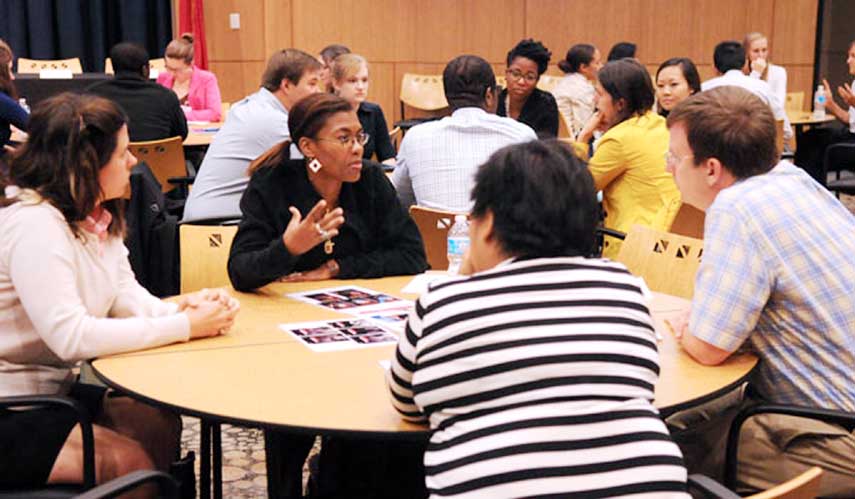
Life Desk :
A new National Academies of Sciences, Engineering, and Medicine report recommends approaches for using 21st century science to evaluate the many factors that lead to health risks and disease, laying the groundwork for a new direction in risk assessment that acknowledges the complexity of disease causation.
This report builds on the findings from two earlier Academies reports – Toxicity Testing in the 21st Century: A Vision and a Strategy, which recommended a path in which testing of chemicals relies primarily on high-throughput in vitro tests and computational models based on human biology to evaluate potential adverse effects of chemical exposures rather than on animal testing, and Exposure Science in the 21st Century: A Vision and a Strategy, which urged a transformational change in the breadth and depth of exposure assessment that would improve its integration with and responsiveness to toxicology and epidemiology.
‘Recent scientific and technological advances have the potential to improve assessment of public health risks posed by chemicals, yet questions remain how best to integrate the findings from the new tools and methods into risk assessment.’
The committee that conducted the study and wrote the report considered the benefits of many new tools in exposure science, toxicology, and epidemiology. For example, personal sensors and other sampling techniques now offer unparalleled opportunities to characterize individual exposures, particularly in vulnerable populations, and computational tools have the potential to provide exposure estimates where exposure-measurement data are not available. Other advances include the further development of cell-based assays that can be used to evaluate various cellular processes and responses and the creation of transgenic animals using gene-editing techniques that can be used to investigate specific questions, such as those related to susceptibility or gene-environment interactions. And -omics technologies have substantially transformed epidemiology and advanced molecular epidemiology fields that address underlying biology and complement empirical observation. To ensure these tools and methods are being used to their full potential, the report calls for a collaborative approach among scientists in the relevant fields.
“This report builds on the conceptual foundation established by the two earlier reports and indicates ways that findings from these new reports can be used in practice,” said Jonathan Samet, Distinguished Professor and Flora L. Thornton Chair at the department of preventive medicine, University of Southern California. “It also identifies critical challenges to be addressed in using 21st century science to better characterize the risks of chemicals for human health.”
The advances in exposure science, toxicology, and epidemiology described in the report support a new direction for risk assessment-one based on biological pathways rather than on observations from lab experiments of effects in animals, and one incorporating the more comprehensive exposure information emerging from new tools and approaches. The new direction emphasizes that most diseases that are the focus of risk assessment are caused by multiple factors; that is, stressors from multiple sources can contribute to a single disease, and a single stressor can lead to multiple adverse outcomes. Conditions intrinsic to an individual, such as genetic make-up or life-stage, or conditions acquired from one’s environment, such as psychosocial stressors and nutritional status, can contribute to a disease. The new direction in risk assessment acknowledges this complexity.
The four agencies that requested the study – U.S. Environmental Protection Agency, U.S. Food and Drug Administration, National Institute of Environmental Health Sciences, and National Center for Advancing Translational Sciences – are all involved with application of these 21st century scientific approaches, including their use in various components of risk assessment, particularly hazard identification and exposure assessment. Assessment of risks from chemicals and other agents provides needed information to decision-makers who must find solutions to protect public health. The scientific growth highlighted in this report will lead to better information for answering pertinent questions about the complex health problems that society faces.
The report discusses a number of risk assessment applications that could be improved by newer tools, such as chemical assessment, assessing risks at facilities like hazardous waste sites, and the evaluation of new chemical molecules for which there are no close comparisons. The report includes several case studies based on realistic scenarios that illustrate ways to incorporate new tools from different fields in assessing the risks associated with known or possibly hazardous agents. For example, investigations show a strong and causal link between air pollution and lung cancer.
However, there are unanswered questions about what components in air pollution are carcinogenic, if the various components interact with each other, what effects might occur at low exposures, and which groups of people might be at a higher risk for cancer because of certain characteristics, like smoking tobacco. This case study further explains how advances in toxicology and exposure science, specifically -omics technology, can be used to characterize adverse effects, further refine measurement of exposures to various components, and identify population groups at risk. It also explores the possibility of unestablished health outcomes caused by air pollution, such as neurodevelopmental issues in children.
The committee emphasized that technological growth is outpacing the development of approaches to analyze, interpret, and integrate the diverse, complex, and large datasets in these fields. The report also proposes an agenda for enhancing use of the findings from these emerging technologies that includes developing case studies reflecting various situations of decision-making and data availability, testing case studies with multidisciplinary panels, and cataloguing evidence evaluations and decisions that have been made on various agents so that expert judgments can be tracked and evaluated.
Although there are several challenges to achieving the visions laid out in the earlier reports, 21st century science holds great promise for advancing risk assessment and ultimately for improving public health and the environment, the report says. The committee emphasizes, however, that communicating the strengths and limitations of the approaches in a transparent and understandable way will be necessary if the results are to be applied appropriately and will be critical for the ultimate acceptance of the approaches.
Source: Eurekalert

